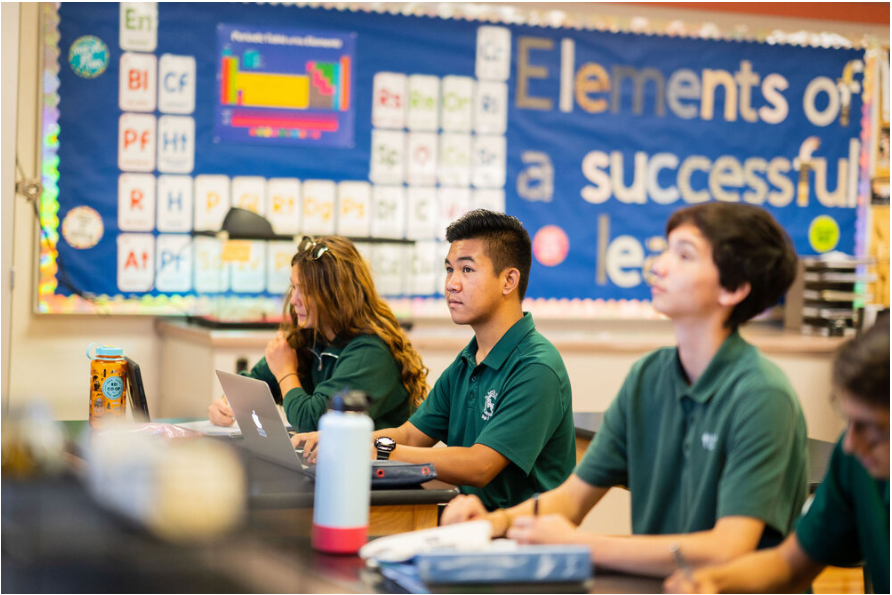For universities, as with nearly every institution, business and sector, the COVID pandemic has created disruptions and the need to evolve. For U.S. colleges and universities, the altered landscape of optional standardized testing, restrictions to travel and immigration and the impact to the economy has meant that this most recent admissions cycle — and likely several to follow – departs from prior trends. The question for current high school students and families in the U.S .and across the world is, “How will changes to the U.S. university admissions landscape affect me, and how do I need to adjust my approach to be successful?”

To recap, 2020 was a year in which many students moved to online and hybrid learning in the spring and fall. SAT, ACT and AP testing were all disrupted. And, somewhat more subtlety, fixtures of the admissions and recruiting lifecycle such as campus and school visits were curtailed. Many U.S. universities moved to test optional and, as a result, the most selective universities in the U.S. received considerably more applications than the previous year. For example, Harvard University’s early action applications increased by 57%. Yale University’s applications rose by 38%. This rise in application volume, combined with the fact that admitted students from the fall of 2020 at these same universities deferred at higher than average rates, means that admission rates for the graduating high school class of 2021 will be considerably lower than average.
It is important to note that this increase in applications and the corresponding lowering of admission rates was true for only the most selective universities. Many universities saw a decline in applications. According to the Common App, undergraduate applications were lower by about 2% for this admissions cycle. Interestingly, international student application volume increased by 11%, despite the fact that travel bans were in effect during this period. Presumably, the availability of ‘test optional’ made it easier for students to apply to more schools and to aim a bit higher than they might have in prior years.
Some of these effects are one-time and others are trends which will continue. For instance, many incoming university freshmen at highly selective universities for the fall of 2020 decided to defer when it was clear that COVID would result in online/hybrid learning and other adjustments to campus life. Universities needed to accommodate these students in the acceptance ‘math’ for the fall of 2021, likely displacing some applicants for fall 2021 who might have been admitted in a normal year. This is a one-time effect. This is in contrast with test optional, which was a trend that was already underway and was markedly accelerated with COVID. So where is test optional headed and what are the implications for current high school students?

The test optional movement is not new and had been picking up steam even prior to COVID. Sarah Lawrence College and Susquehanna University where two of the first U.S. institutions to announce that the SAT and ACT were not required. Many colleges and universities followed with The University of Chicago becoming the highest ranked university to go test optional in 2018. Some universities, including the University of California system, have announced that they will be ‘test blind’ meaning that they won’t consider a student’s ACT or SAT result even if it is submitted. COVID brought many more universities into the test optional fold.
FairTest, a national center for fair and open testing, reports that 1,350+ colleges and universities will be test optional in 2021. It remains to be seen which of these universities will remain test optional for subsequent admission cycles. It’s likely that many of them will. So, why would universities adopt test optional policies even when SAT and ACT testing becomes more widely available post-COVID? The answer to that question has a lot to do with the goals universities have for their incoming class composition.
U.S. universities practice ‘holistic’ admissions, meaning that they are interested in understanding the full picture of a student – academically, as well as the student’s extracurricular, leadership and service involvements. In a sense, universities are curating their student body so they create a diverse and vibrant community of learners and, ultimately, graduates who will contribute to the world. Universities are also committed to providing access to traditionally underserved students, particularly first generation and low-income students. Since these students tend to have less access to costly standardized test preparation, the SAT and ACT tend to favor students who have increased access to test prep. Test optional policies are a way to ‘widen the net’ and allow students who may not have high SAT and ACT scores, but who are strong students with interesting extracurricular involvement.

The major takeaway for prospective students regarding the test optional movement is simple – get interesting. When a high ACT and SAT is not a way for a student to stand out, you need to stand out on the basis of your extracurricular, leadership and service involvement. As a university admissions officer reads your application, you want them to notice your unique talents and involvement. This is not to suggest that you need to be involved in hundreds of activities; conversely, universities want to see students who are deeply involved with activities and who may have demonstrated commitment, creativity and unique contributions. The good news is that you should not involve yourself in activities strictly for the purpose of standing out in college applications. Becoming involved in sports, the arts and various service activities is a great way to develop skills, friendships and to contribute to the community.
In summary, some of the impacts of COVID are unique and short-term; however, test optional was here before, accelerated under COVID and is likely to be around for the long haul. So, find your interests and ‘get interesting.’




